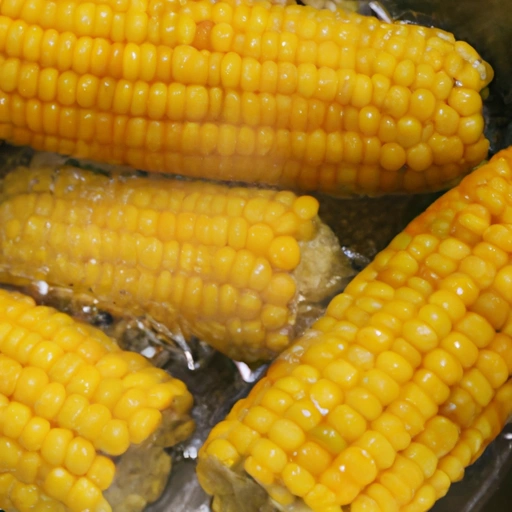Sweetcorn
Description

Sweetcorn, also known as corn on the cob, is a popular vegetable cultivated for its sweet, edible kernels. Picked at the peak of maturity and sugar content, it is enjoyed for its juicy, tender texture and natural sweetness. Sweetcorn is widely used in a variety of culinary applications, making it a beloved ingredient in dishes around the globe. Whether grilled, boiled, steamed, or baked, this vegetable offers a distinct flavor and a multitude of preparation possibilities.
Common uses
Sweetcorn is frequently used as a side dish, in salads, soups, casseroles, and as a topping for various foods like pizzas and tacos. It is also processed into cornmeal, corn flour, and corn syrup, which are commonly used in baking and sweetening. The versatility of sweetcorn extends to its ability to be preserved, with canned and frozen corn readily available for out-of-season use.
Nutritional value
Calories
Sweetcorn contains approximately 86 calories per 100 grams (3.5 oz) or about 77 calories in a small ear of corn (6.5 inches long, 143 grams).
Protein
Protein content in sweetcorn is about 3.2 grams per 100 grams (3.5 oz) or 4.5 grams per small ear of corn.
Fat
Sweetcorn has a low-fat content, with roughly 1.2 grams per 100 grams (3.5 oz) and 1.7 grams per small ear of corn.
Carbohydrates
Carbohydrates are present in sweetcorn at approximately 19 grams per 100 grams (3.5 oz) or 27 grams per small ear of corn.
Vitamins
Sweetcorn is a good source of B vitamins, particularly thiamin (B1) and niacin (B3), as well as vitamin C.
Minerals
The vegetable provides essential minerals such as phosphorus, magnesium, potassium, and trace amounts of iron and zinc.
Health benefits
Consuming sweetcorn offers various health benefits, including providing energy from its carbohydrates, supporting muscle and nerve function due to its magnesium and potassium content, and aiding digestion through its dietary fiber. Its antioxidant properties, attributed to the presence of vitamin C and phenolic compounds, can help combat free radicals and reduce inflammation.
Potential risks
While sweetcorn is generally safe for consumption, some individuals may be allergic to corn. Additionally, sweetcorn's high carbohydrate content may be a consideration for those on carb-restricted diets. Being a GMO crop in some regions, there is ongoing debate about the long-term effects of genetically modified sweetcorn on health and the environment.
Common recipes
Sweetcorn is incorporated into a wide range of recipes, from the classic American corn chowder and Mexican street-style elote to European corn salads and Italian polenta. It is a staple in many vegetarian, vegan, and meat-based dishes.
Cooking methods
Popular cooking methods for sweetcorn include grilling, which imparts a smoky flavor; boiling, for a quick and easy preparation; and roasting, which enhances its natural sweetness. Sweetcorn can also be microwaved, sautéed, or deep-fried.
Pairing with other ingredients
Sweetcorn pairs well with a variety of ingredients such as butter, cheese, chili, lime, basil, and cilantro. It complements proteins like chicken, pork, and seafood, and can be combined with other vegetables like bell peppers, tomatoes, and onions.
Summary
Sweetcorn is a versatile, nutritious, and tasty ingredient enjoyed in cuisines across the world. It offers health benefits due to its vitamin, mineral, and fiber content and can be cooked in many ways to complement a vast array of dishes. With its rich history and widespread popularity, sweetcorn remains a favorite in both traditional and contemporary recipes, offering a touch of sweetness and texture to any meal.